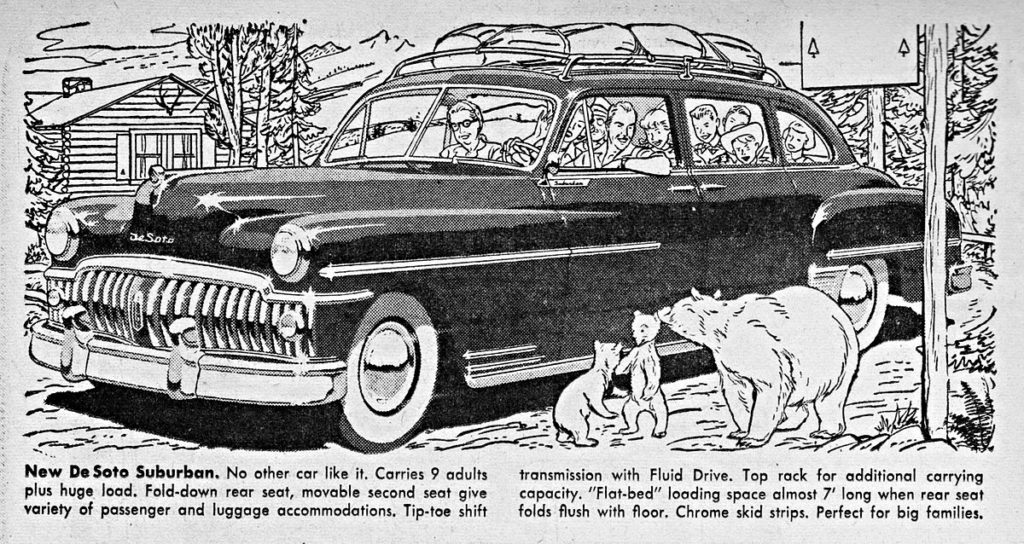1950
Sales were good in 1950, but may have been even better without the 100-day labor strike. It's remarkable that sales were still up by 18.9% at year's end, a testament to the enormity of the post-war automotive boom.
After a short-run second series 1949 model, the S-14 had a minor facelift with a new grill and peaked rear fenders. Coupes and sedans had larger rear windows and the hood ornament switched from a two-sided "flat" Hernando bust medallion to a 3-D Hernando bust. Though not visible, the brake drum size also increased from 11 inches to 12. Also new for this year was a parking brake at the tail shaft of the transmission, which utilized an internal expanding shoe.
Perhaps one of the more notable introductions for 1950 was the new Sportsman model. Though not produced until June, 4,600 were sold the first year. Essentially a convertible body with a fixed steel roof and open window areas when the windows were down, this body style was destined for immense popularity as the decade would progress. Complimenting this body was also the all-steel station wagon introduction. This would be the only year it overlapped with the sunsetting woodcrafted station wagon and would remain a DeSoto body style through 1959.
Engine: 237 c.i. 6 cylinder, 112 hp
Wheelbase: 125.5 (standard, including wagon), 139.5 (8 & 9-passenger sedans)
Los Angeles Deluxe VIN Start: 60005001
Los Angeles Deluxe VIN End: 60009175
Detroit Deluxe VIN Start: 6233501
Detroit Deluxe VIN End: 6262653
Los Angeles Custom VIN Start: 62011501
Los Angeles Custom VIN End: 62023225
Detroit Custom VIN Start: 50062001
Detroit Custom VIN End: 50148412
Production Numbers
Deluxe 4-Door 6-Passenger Sedans Produced: 18,489
Deluxe 4-Door 8-Passenger Sedans Produced: 235
Deluxe Carry-All Sedans Produced: 3,900
Deluxe Club Coupe: 10,703
Custom Six All-Steel Wagons Produced: 100
Custom Six Woodcrafted Wagons Produced: 600
Custom Six 4-Door 6-Passenger Sedans Produced: 72,664
Custom Six 4-Door 8-Passenger Sedans Produced: 734
Custom Six Suburban 9-Passenger Sedans Produced: 623
Custom Six Club Coupes Produced: 6,100
Custom Six Sportsmans Produced: 4,600
Custom Six Convertibles Produced: 2,900
Source: The Plymouth and DeSoto Story by Don Butler







